Albania 101

ALBANIA
From ancient Illyrian tribes to Ottoman rule and Communist isolation Albania has a fascinating history that spans more than two millennia. This resilient country, which escaped from communism in 1991, has managed to preserve its own unique cultural history and customs while becoming one of Europe's most fascinating travel destinations.With its rich cultural heritage, ancient history, and stunning scenery that offers a variety of experiences, Albania is a treasure of the Balkans.
Because of their close proximity to Italy and Greece, Albanians are known for their warm hospitality, lively folk music, dance, and Mediterranean food. You'll most likely be greeted by Albanians, who are renowned for their warmth and pride in their culture.
INSIGHTS
Language: Albanian (Shqip) is unique, forming its own branch of Indo-European languages.
Food: Mediterranean cuisine with Turkish and Balkan influences.
Currency: Albania uses the Albanian Lek (ALL). Credit cards are accepted in cities, but cash is preferred in most places.
CASH IS KING - make sure to always have cash on you!
Getting around in Albania
Furgons are your new best friends - these intercity minivans run on a flexible schedule, stop on demand, and are very budget-friendly. These are also known for putting stools in the aisle row when all seats are taken.
The national bus timetables are pretty reliable but you can’t find a timetable for local buses and need to ask the locals or bus drivers on site. When getting on a local bus you don’t pay the driver - a second person will go around the bus and collect payment. Outside Tirana bus-rides are 30 lek (€0.3) and in Tirana it’s 40 lek.
Gjirafa Travel is the best website for checking bus schedules and prices online in English.
Don’t rely on google maps! When driving expect some detours and the same goes for finding addresses – street names and house numbers often don’t correspond to what’s on the map.
Renting a car is fairly easy and convenient in Albania but you don't really need a car.
Best times to visit Albania
Spring (April-June): Ideal for outdoor activities
Summer (July-August): Peak season, busy but perfect for beaches
Fall (September-October): Pleasant weather, fewer tourists, AMAZING colors
Winter (November-March): Good for budget travel, some attractions are closed
Places to visit in Albania
Gjirokastër
Known as the "City of Stone," Gjirokastër is famous for its well-preserved Ottoman architecture and cobbled streets. It’s a UNESCO World Heritage Site and the best place to get a glimpse into Albania’s rich past.
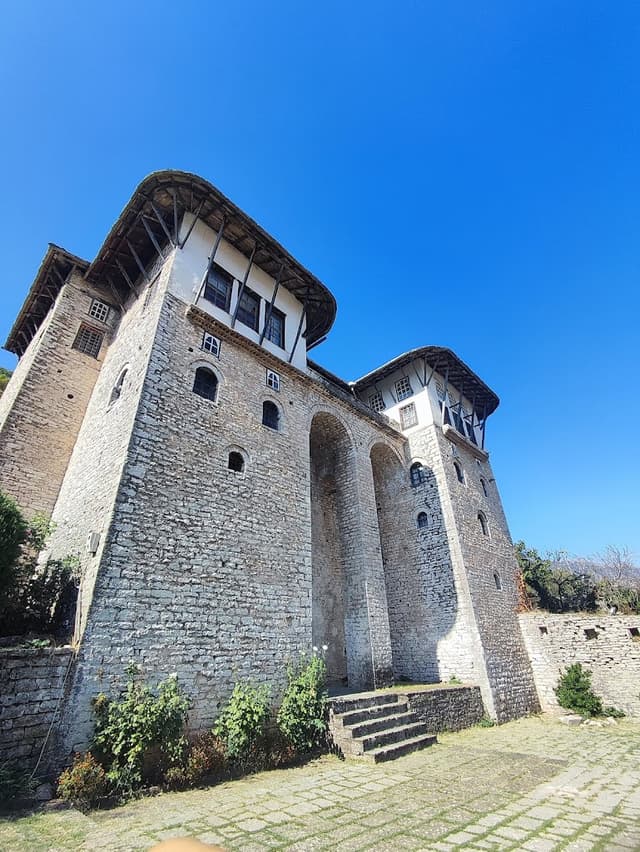
A perfect example of Ottoman architecture, Zekate House is a three-story mansion with sweeping views over Gjirokastër. This family home, constructed in the early 19th century, displays traditional decor and craftsmanship that reflects the period’s luxurious lifestyle.
Tip: Book a guided tour to learn about the architectural symbolism.
Entry is 300 lek / €3
Open daily from 8am to late evening.

Another preserved Ottoman-era mansion, Skënduli House offers a glimpse into traditional Albanian life with its multiple rooms, harem quarters, and unique architectural features. The family members who still care for the house provide fascinating historical context.
Entry is 200 Lek / €2.
Open every day from 9am to 6pm

The tunnel is a fascinating glimpse into Albania's paranoid past
Tip: Bring a light jacket as tunnels maintain cool temperature
The tunnel tour takes about 20 minutes.
Entry is 200 Lek / €2.
Opening hours: April-October (high season) 09:00-18:00 hrsand November-March (low season) 08:00-14:00 hrs

Located at the heart of Gjirokastër, this Ottoman-style bazaar sells handmade crafts, traditional Albanian textiles, and souvenirs. It’s the perfect place to pick up unique gifts and experience the town’s vibrant street life.
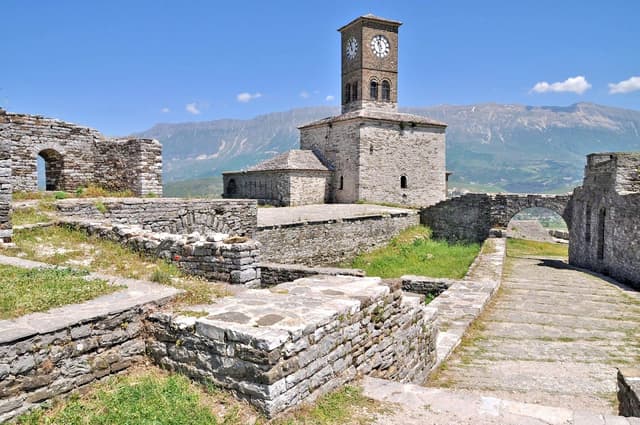
Gjirokastër Castle is one of the largest Balkans castles and a formidable fortress that once served as a military outpost. Inside, you’ll find a museum, weaponry displays, and even a U.S. Air Force plane, a relic from the Cold War. The castle also offers magnificent views of the surrounding valley.
Entry is 400 Lek / €4
Open all year round (April to September 9am to 7pm, October to March 9am to 5pm).
Day trip from Gjirokaster

Located just an hour’s drive from Gjirokastër, the Blue Eye (Syri i Kaltër) is one of Albania’s most beautiful natural wonders. This deep, crystal-clear spring, named for its intense blue and turquoise colors, resembles an eye with a dark center and lighter edges. Surrounded by scenic trails, the Blue Eye is an ideal destination for nature lovers.
Tips for Visiting the Blue Eye:
Best Time: Visit early in the morning or late afternoon to avoid peak crowds, especially during summer.
Getting There: You can reach the Blue Eye by car or by bus. The bus goes from Gjirokaster once a day and costs 450 lek / €4.5
Entrance fee: 50 lek / €0.5
Where to stay in Gjirokaster



Berat
Known as the "City of a Thousand Windows," Berat is a UNESCO World Heritage Site with stunning Ottoman-era buildings and narrow cobblestone streets.

Built on a hilltop, Berat Castle houses a small village within its walls, with medieval churches and mosques spread around the area.
The word "castle" is a little misleading as it's basically just ruins. But the views are breathtaking.
Visiting is completely free!
IMPORTANT: getting to the castle requires a climb of a steep hill!

A short walk from the castle, the platform offers a stunning panoramic view of Berat and its iconic Ottoman houses. This is an ideal spot for photography, especially at sunset.

This beautifully preserved Byzantine church stands inside Berat Castle and features impressive frescoes and architecture. It's one of the few remaining active Orthodox sites within the castle walls.

Saint Demetrius Cathedral, located near the Old Town, showcases beautiful religious art and peaceful surroundings. The interior is decorated with detailed iconography, giving insight into Albania’s Orthodox heritage.

The Old Town is famous for its white Ottoman houses, creating a “thousand-window” effect. The district’s steep, winding streets lead to charming cafes, artisan shops, and viewpoints.
Day Trip from Berat

A natural wonder with emerald waters and striking rock formations, Osumi Canyon offers river-rafting opportunities in the spring and scenic hiking in summer and fall. The lush greenery and waterfalls make it a must-see for nature lovers.

Where to stay in Berat

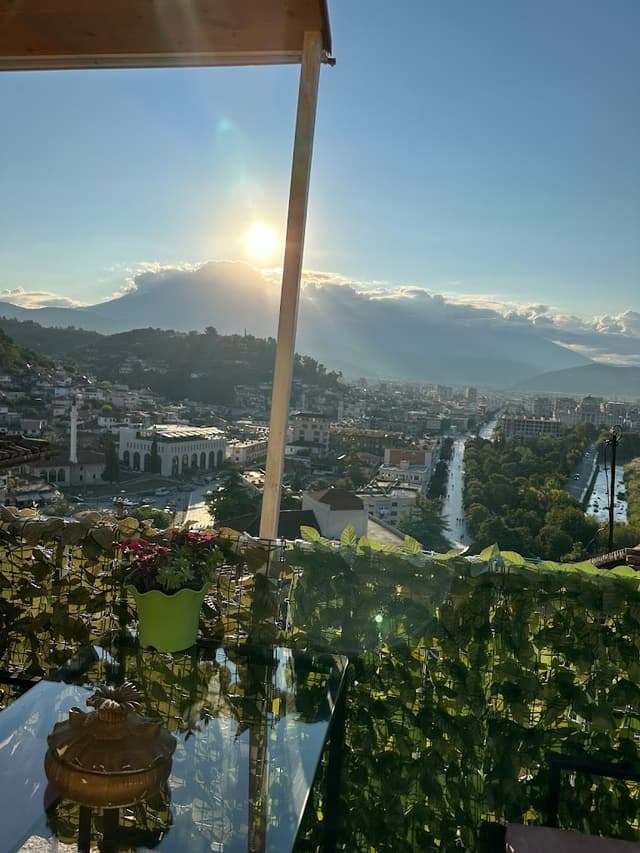

Tirana
The capital city of Tirana blends modern life with historic landmarks and a youthful energy that attracts many travelers.
Architecture
Tirana’s architecture has become quite famous and will be one of the first things you notice. Here’s some main points
Italian Influence: This is most evident around Skanderbeg Square, where you’ll see Italian-inspired buildings like the National History Museum and the Et'hem Bej Mosque.
Communist-Era Architecture: The Communist era left Tirana with imposing, minimalist structures that reflect the rigidity of the time. The Pyramid of Tirana, originally built as a museum for Enver Hoxha, is one of the most recognizable remnants of this era.
Modern Urban Renewal: Since the 2000s, Tirana has embraced colorful facades, unique public spaces, and innovative design.





The Resurrection Cathedral (Katedralja Ngjallja e Krishtit) in Tirana is one of the largest Orthodox churches in the Balkans and a symbol of Albania’s religious revival. Built in 2012, this stunning, modern cathedral features a sleek, white exterior with a prominent blue dome and a tall bell tower. Inside, the cathedral’s high ceilings and vast space are adorned with intricate frescoes, icons, and stained glass that highlight Orthodox artistry.

This museum, once a Communist-era surveillance center, provides a haunting glimpse into the regime’s control over its people. Exhibits detail Albania’s complex relationship with state surveillance.
Ticket price700 lek / €7 (Students 210 lek)
Open Everyday 09:00 – 19:00

Set in an underground bunker, Bunk'Art 2 immerses visitors in Albania’s history under Communist rule. The museum combines art installations with historical displays, creating a powerful atmosphere.

Also known as the Fortress of Justinian, Tirana Castle is a remnant of the Byzantine era. Today, it houses shops and cafes and is a popular gathering place for locals and tourists alike.

One of Tirana’s oldest buildings, the Et'hem Bej Mosque is famous for its intricate frescoes and peaceful ambiance. The mosque, though small, showcases delicate Albanian artistry.

The Tirana Clock Tower, or Kulla e Sahatit, is one of the city’s oldest and most beloved landmarks. Built in 1822 by Haxhi Et'hem Bey, the tower originally featured an Ottoman-style wooden clock, replaced later with a German mechanism after it was damaged in World War II. Standing 35 meters tall, the Clock Tower provides a stunning view over Skanderbeg Square and the surrounding historical sites.

A cable car ride up Mount Dajti offers a peaceful escape from the city with views of Tirana and the surrounding landscapes. At the top, you can hike, dine, and even try paragliding.
Day Trip from Tirana
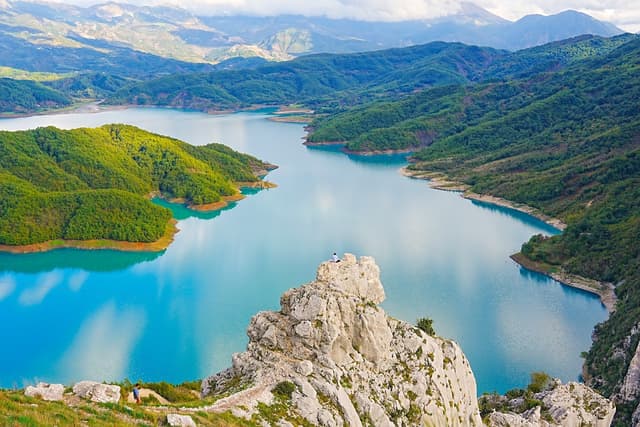
Just a short drive from Tirana, Lake Bovilla is a beautiful, turquoise lake surrounded by rugged cliffs. It’s an ideal destination for hiking, picnicking, and swimming in a serene natural setting.
Climbing to the viewing platform costs 50 lek / €0.5
BE AWARE that you can only get here by car and the road is UNPAVED and very bumpy. Parking is free
Where to stay in Tirana



Shkodër
One of Albania’s oldest cities, Shkodër is known for its rich history, proximity to mountains, and lake views.


With legends woven into its stones, Rozafa Castle overlooks Shkodër and its lake, offering insight into ancient Illyrian fortifications. The views from the top are remarkable.
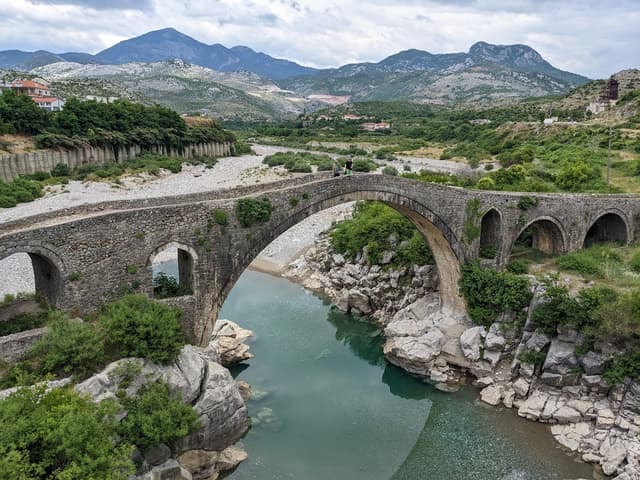
This 18th-century stone bridge is one of Albania’s most picturesque Ottoman structures. Stretching over the Kir River, it’s a peaceful site for photography and short strolls.
Where to stay in Shkodër


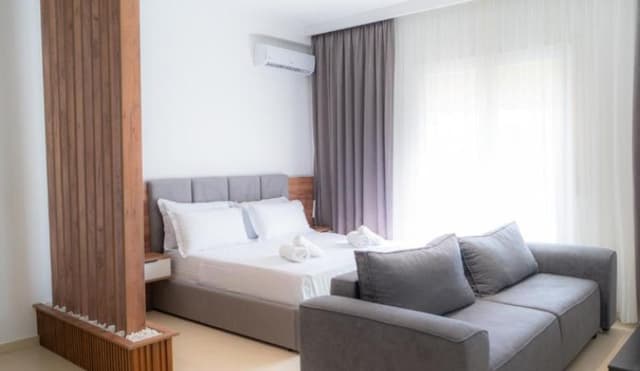
Day Trips from Shkodër
Hike from Valbone to Theth
There’s several ways to do the hike but I chose to book through the Wanderers Hostel in Shkodër. They arrange all transportation and bookings for you. You depart together with a group which is the best way to find hiking buddies if you’re traveling solo.
Tips for the Theth Hike
Pack light! You have to carry everything yourself, and you really don’t need much (unless you hike in winter).
Bring electrolytes! Lots of water is always good, but as you’ll sweat a lot, put some salt/electrolytes in your water as well (especially if you hike in the summer)
Bring light snacks! You’ll be able to bring lunch from the first guesthouse along with you on the hike, but this is white bread with cheese and ham. Consider buying snacks in Shkodër to bring with you.
Wear sunscreen! No matter what time of year you do the hike - sunscreen is always mandatory!
When to do the Theth Hike?
I’d recommend doing the hike in early spring or in autumn. I did the hike on the 13th of October and it was perfect. Not only because the colours are amazing, but the temperature makes it easier to walk. It can get really hot in Albania, so be careful if you hike in summer.
How long is the Theth hike?
We spent 6.5 hours hiking from Valbone to Theth. This includes stops to catch a breath as well as taking photos and a little lunch break. You can also hike the other way around, but I recommend starting in Valbone as the views are better in the first leg of the hike.


The home for unique & authentic travel
